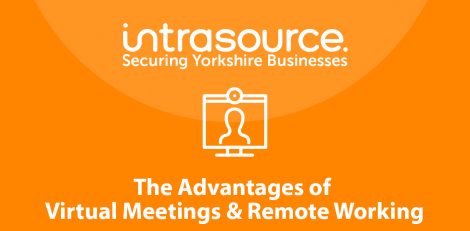Regarding virtual meetings it’s sometimes thought that it’s more difficult to get things done or gain consensus on major issues if everyone isn’t together in the same room. Plus, some argue that the tendency for attendees to crosstalk and multitask is higher, and there’s greater potential for distractions when people are connecting from multiple locations.
But as more individuals work remotely and from mobile devices, these misperceptions are starting to fall by the wayside. Many are finding that virtual meetings can offer distinct – and worthwhile – advantages. Not only can virtual meetings help your team make decisions faster, but the latest enhancements to conferencing and collaboration technologies can keep attendees engaged and make meetings more productive.
In fact, virtual meetings are easier than ever to organise with features such as one-click joining for impromptu sessions and calendar integration for planned conferences. In addition, collaboration tools such as screen sharing and web chat greatly improve team interaction. And by adding video, organisers can help colleagues interact and bond as if they were in the same room.
Still, conducting a successful, outcome-oriented virtual meeting requires solid organisational and team management skills. The most effective organisers understand just how important it is to structure their meeting in a way that will maximise attendee participation and keep the discussions on track to ensure actionable outcomes.
“Virtual meetings require a stronger leadership approach because you don’t have access to the non-verbal cues about whether people have questions or would like to get into the conversation,” Paul Axtell, author of Meetings Matter, writes in Harvard Business Review.
To manage virtual meetings so that they’re more effective, Axtell recommends paying attention to three things: Relationships, Planning and Leadership.
Relationships: Team Building
During face-to-face meetings, attendees have those few minutes to greet each other, shake hands and share personal anecdotes over coffee before getting down to business. This pre-meeting chat is valuable for creating connections among co-workers and forming the trust needed for effective collaboration. Meeting organisers and team leaders should build a few minutes of this casual time into the beginning of the meeting, and it’s naturally suited for the time in which participants are joining the call. Video conferencing makes these interactions even more personal, of course. However, as an organiser, it’s also important to firmly and tactfully bring the meeting back to the main agenda after a few minutes to ensure a productive session.
Smart Planning
All meetings operate more smoothly with an agenda in place, but don’t try to pack too much into one session. In fact, Axtell recommends planning 20% more time for each topic than you think you’ll need. To keep your meeting on schedule, an agenda timer integrated with your conferencing solution can make planning easier and also help to track discussions in real time, ensuring that every topic is covered within your schedule.
Leadership: Lead the Conversation
One of the biggest challenges of virtual meetings is the risk that some attendees won’t fully participate. This is important because when colleagues don’t speak up or can’t get a word in, crucial information may be missed, potentially leading to poor decisions.
As the meeting organiser, you’re responsible for managing this in a few ways. First, make sure you have the right attendees. This may seem obvious, yet we’ve all been subject to meetings we didn’t need to be in and meetings that go off the rails because there are too many participants to effectively collaborate. Next, be clear on the nature and expectations of the call with your agenda and invitation. If the intent of the meeting is simply to inform, be sure attendees are muted at the appropriate times and know when and how they should engage with questions. If participation is expected from all attendees, it’s your job as the leader to proactively seek input from quieter participants. This is essential in a virtual setting where body language and other non-verbal clues aren’t as available to you.
We have partnered with 2 global leaders to deliver our customers the very best phone systems. We are now NEC and Shoretel Partners. This allows us to give the option of a cloud based system, an onsite system or a hybrid telephone system. For information on how you can have a cost effective enterprise phone system for your business contact Intrasource.
Find more IT cloud news and information here including the importance of backups and the benefites of hosted services.



